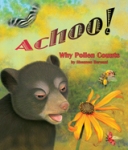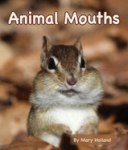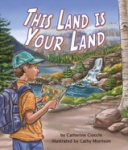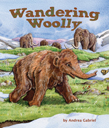Seventy-five years ago folk singer Woody Guthrie penned the initial lyrics to “This Land Is Your Land,” considered by many to be the alternative national anthem. Sung in elementary schools, children’s summer camps, around campfires, at rallies, and during concert encores, “This Land Is Your Land” is the archetypal sing-along song, familiar to generations of Americans. But what most do not know is that Guthrie, the “Oklahoma Cowboy,” actually wrote the song in New York and that its production and dissemination were shaped by the city’s cultural institutions.
The post This land is your land appeared first on OUPblog.
Are you looking for a fun family trip this summer? Don’t want to travel too far from home? This Land Is Your Land talks about many different landforms all over the United States. Read this book with your children to teach them about the diverse landscapes of our beautiful country, then pack up the car and head to the nearest (or farthest!) destination. Who says education has to stop in the summer?
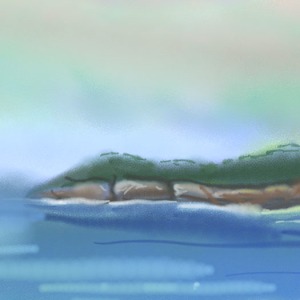 Coastlines: Perhaps the easiest landform to reach for many, the United States coastline is over 95,000 miles long. Many people live on the coast – about 39% of the country’s population! The coast is a very popular tourist destination, and there are hundreds of beaches for people to travel to. Some of the best family beaches are located in the Outer Banks in North Carolina; Maui, Hawaii; Myrtle Beach, South Carolina; Destin, Florida; San Diego, California; and Ocean City, Maryland. There are beaches in every coastal state, though. Which beach is closest to you?
Coastlines: Perhaps the easiest landform to reach for many, the United States coastline is over 95,000 miles long. Many people live on the coast – about 39% of the country’s population! The coast is a very popular tourist destination, and there are hundreds of beaches for people to travel to. Some of the best family beaches are located in the Outer Banks in North Carolina; Maui, Hawaii; Myrtle Beach, South Carolina; Destin, Florida; San Diego, California; and Ocean City, Maryland. There are beaches in every coastal state, though. Which beach is closest to you?
Mountains and hills: Mountains are also another popular place for tourists, especially those who enjoy activities such as hiking and  camping. Some states have more to offer than others when it comes to mountains. For example, the highest point in Florida is only 345 feet above sea level, whereas Alaska’s Mt. McKinley towers 20,320 feet above sea level. However, all 50 states have some sort of forest, lake, or other natural area where camping and nature walks are possible, so even those of you in the flatter states don’t have to miss out!
camping. Some states have more to offer than others when it comes to mountains. For example, the highest point in Florida is only 345 feet above sea level, whereas Alaska’s Mt. McKinley towers 20,320 feet above sea level. However, all 50 states have some sort of forest, lake, or other natural area where camping and nature walks are possible, so even those of you in the flatter states don’t have to miss out!
Plateaus and canyons: In the United States, plateaus are found mainly in the western states, where the Colorado Plateau is. Plateaus provide opportunities for hiking and climbing, and the Colorado Plateau contains the famous Colorado River and Grand Canyon. Many national parks are also in this area, including Zion and Mesa Verde, where you can find smaller plateaus and canyons.
Valleys: A valley is simply a place between mountains or hills, so even states such as Kansas, with very few hills, have some areas that lie lower than others. Beautiful valleys in the United States include the Sedona Verde Valley in Arizona, Napa Valley in California, the Waipi’o Valley in Hawaii, and the Shenandoah Valley in Virginia.
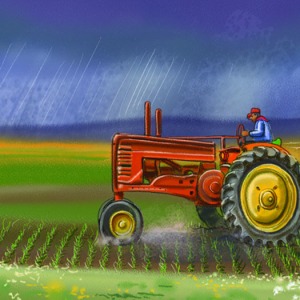 Plains: The plain region of the United States is called the Great Plains, which runs from Texas north to Oklahoma, Kansas, Nebraska, the Dakotas, and eastern Montana. The Great Plains are known for their extensive flat lands covered in tall grass, cattle ranches, and bison. Be careful here in the spring and summer – the Great Plains are located in Tornado Alley, where tornadoes happen most frequently!
Plains: The plain region of the United States is called the Great Plains, which runs from Texas north to Oklahoma, Kansas, Nebraska, the Dakotas, and eastern Montana. The Great Plains are known for their extensive flat lands covered in tall grass, cattle ranches, and bison. Be careful here in the spring and summer – the Great Plains are located in Tornado Alley, where tornadoes happen most frequently!
Peninsulas: Arbordale Publishing is located near a well-known peninsula –Charleston, South Carolina! Many of the first towns settled in the United States are located on peninsulas, as they provide easy access by water to ships delivering people and supplies. Jamestown, Virginia and Boston, Massachusetts were first built on peninsulas. The entire state of Florida is a big peninsula!
Volcanoes: The west coast of the United States is located in what is 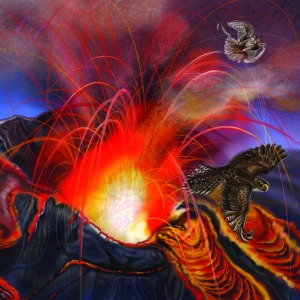 known as the “Ring of Fire,” an area where many volcanic eruptions and earthquakes occur due to the movement of the Earth’s tectonic plates. Active, potentially dangerous volcanoes in the United States include Kilauea Volcano in Hawaii, Mount St. Helens in Washington, Mount Hood in Oregon, Mount Shasta in California. While some of these volcanoes haven’t erupted in years, they are not considered dormant, meaning they could erupt at any time. A volcanic eruption would be an exciting sight to see, but be sure to keep your distance!
known as the “Ring of Fire,” an area where many volcanic eruptions and earthquakes occur due to the movement of the Earth’s tectonic plates. Active, potentially dangerous volcanoes in the United States include Kilauea Volcano in Hawaii, Mount St. Helens in Washington, Mount Hood in Oregon, Mount Shasta in California. While some of these volcanoes haven’t erupted in years, they are not considered dormant, meaning they could erupt at any time. A volcanic eruption would be an exciting sight to see, but be sure to keep your distance!
Islands and archipelagos: The most famous example of an island chain in the United States is Hawaii. Another is the Aleutian Islands in  Alaska. Since neither of these are especially accessible to the average Mackinac, Michigan; Whidbey Island, Washington; Mount Desert, Maine; Amelia Island, Florida; and Assateague Island, Virginia. Did you know that part of the biggest city in the United States is located on an island? Manhattan is surrounded by the Hudson River, the East River, and the Harlem River!
Alaska. Since neither of these are especially accessible to the average Mackinac, Michigan; Whidbey Island, Washington; Mount Desert, Maine; Amelia Island, Florida; and Assateague Island, Virginia. Did you know that part of the biggest city in the United States is located on an island? Manhattan is surrounded by the Hudson River, the East River, and the Harlem River!
Learn more about these landforms in Catherine Ciocchi’s book This Land is Your Land!
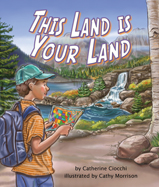


Our theme for January is Landscape so here you go. These are from
This Land Is Your Land, a picture book about land forms. It's by Catherine Ciocchi, published by
Arbordale Publishing and illustrated by me, Cathy Morrison. You can see more about this and other projects on my
Studio With A View Blog.
Happy New Year and thanks so much for taking a look!









